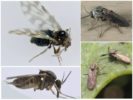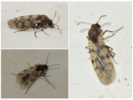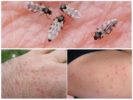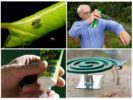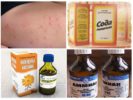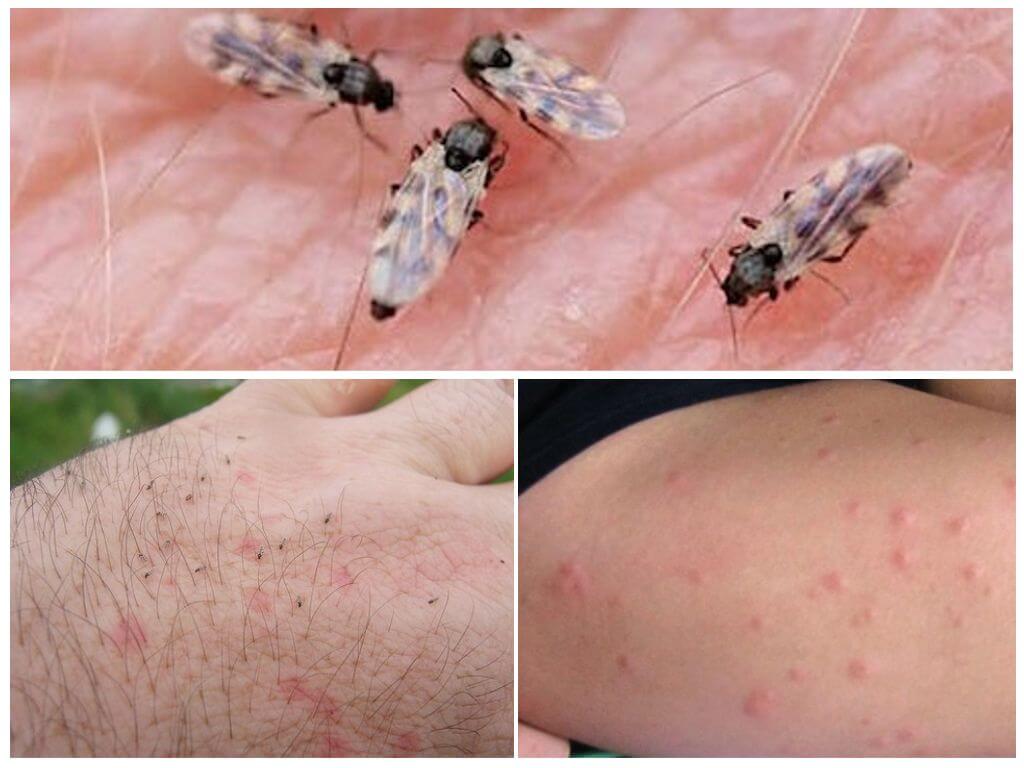- Bells
- Spotted Mocha
- Biting midges
- Insect protection
- Bite softeners
One of the most numerous families that make up the “gnatus complex” is the family of biting midges. The systematics of these bloodsuckers has not yet been determined. Constantly discovering new species belonging to this family. In general terms, biting midges are small diptera insects living all over the globe except Antarctica. They are one of the two main components of the "sinus complex."
On a note!
The “vulture complex” includes all dipterous blood-sucking insects up to flies tse-tse. The most numerous components of this composition are: biting midges and midges.
General description of the family
In total there are 1800 biting midges. Their appearance is very similar to mosquito appearance. Because of this appearance, confusion often arises and representatives of a completely different family are often called “little mosquitoes”. But these insects have no relation to mosquitoes:
- biting midges are very small insects, the maximum size of which is not more than 4 mm, in most cases the size of a representative of this family does not exceed 1 mm;
- with such sizes it is difficult to consider gray-spotted breasts and spotted wings of a bloodsucker;
- biting midges have 3 pairs of legs;
- the oral apparatus is piercing-sucking;
- wings, like a mosquito, are folded parallel to each other and to the body of the insect.
It is possible to examine in detail how a mohawk looks only in photographs with multiple image enlargements.
In Russia, the most common and numerous species of biting midges is spotted. This insect in the Far East accounts for 98% of the total mass of the midge. The size of the bloodsucker allows it to easily penetrate the human body through clothes. This type of insect is widespread everywhere where there is enough moisture for the development of larvae. You can meet spotted biting midges not only in the Siberian taiga, but also in the Karelian forests. This type of gnat is absent only in the tundra, dry steppes and semi-deserts. Spotted mokret in the photo below.
The lifestyle and nutrition of biting midges
The name directly indicates that insects love wet places. Indeed, all phases of the development of biting midges, except for adults, occur either in water bodies or in very moist soil.
On a note!
Representatives of this bloodsucking family do not like running water.
They prefer to breed in bodies of water with standing or weakly running water. Although the chances of meeting these insects by the river are quite high, as the river always has quiet small backwaters, where the current is very weak.
Like any representative of the "gnat complex", the biting midfoot has 4 phases of development: eggs, larva, pupa, and imago. Egg development requires 3-6 days, larvae 2-3 weeks, pupae 3-7 days. Larvae of various species of this family can be predators or saprophages.
On a note!
Saprophage is an insect that feeds on rotting organics.
In accordance with their food preferences, the larvae live either in bodies of water or in abundantly moist soil. If the summer is warm and long, the insect mokrets can give 5 generations of new bloodsuckers.
Hunting techniques and victims of biting midges
The main hunting time for biting midges is in the evening and morning. At this time, they are actively looking for prey. At other times, they have waiting tactics.Insects sit on the leaves, waiting for prey. When the victim appears, part of the bloodsuckers takes off and pursues a food source, the other part tries to crawl from below the legs.
Moshka mokrets is to some extent a cannibal. Insects drink blood not only in mammals, but also in birds, lizards, snakes and butterflies (hemolymph serves as food). Not all types of “micro-mosquitoes” attack mosquitoes and mosquitoes. Those who have adapted to "rob relatives" drink fresh blood directly from the stomach of other bloodsuckers. When attacking a person, a taiga nest, which includes biting midges, can kill its victim overnight.
On a note!
In the taiga, the number of bloodsuckers attacking a person of this species can reach 10,000 individuals in 5 minutes.
Danger to humans
Biting eggs carry infectious diseases that are dangerous for humans, starting with anthrax and ending with human filariasis. In the southern regions, these insects carry Congo-Crimean hemorrhagic fever. Bloodsuckers are also dangerous for livestock, being carriers of animal-specific diseases. Often become a cause of rabbit disease with viral hemorrhagic disease.
The biting of a biting frog is very painful and can cause an allergic reaction or a disease of ceratopogonidosis in a person. Bloodsuckers, when bitten, sprinkle poisonous saliva, causing local inflammation, burning and prolonged itching. Even in the absence of allergy after an insect bite, the puncture site and the appearance of ulcers often occur. In bite-sensitive people, itching lasts for 10 days.
Important!
The favorite places for biting midges are neck and face. This factor must be taken into account when planning a trip to the taiga, as in ordinary life people do not pay attention to the fact that their faces and neck are open.
Biting midges
The most effective remedy for midge midges is not to go to the taiga. In cities where there are not enough reservoirs for reproduction, these insects are rarely found. If a trip to the forest or taiga is inevitable, you will have to take care of repellents. To move through the forest, an insect repellent cream or aerosol can be applied to the body.
On a note!
Repellents work until a person properly sweats.
In parking lots you can use spiral fumigators or the same creams and aerosols. If you plan to spend the night near a pond, it is better to stock up with a mosquito net for the tent. As an additional measure against sinus, a mixture is applied to the grid: 2 parts of tar for 1 part of caustic soda. Use the mesh only after drying in the shade.
Of mechanical personal protective equipment, it is better to acquire a suit that prevents the penetration of "micro-mosquitoes" to the body through clothing. Particular attention should be paid to the mosquito net protecting the face and neck. The selected mesh should have the smallest mesh size possible. To minimize the number of bloodsuckers that are sure to get under the clothes, the cuffs of the sleeves should be equipped with elastic bands. Trousers are better to fill in boots. At the same time, such clothes will protect against tick attacks.
If insects got to the body
The effects of bites mitigate:
- a mixture of ammonia and water: 50/50;
- a solution of drinking soda: 1/2 teaspoon per glass of clean water;
- onion juice;
- tincture of calendula;
- lemon juice;
- well-mashed leaves of parsley, bird cherry, mint or plantain.
Tampons moistened with folk remedies are applied to the affected areas for about 10 minutes.
An urban man has little chance of meeting these small, but rather dangerous insects. People who go to forests with a large number of ponds, in which the bulk of all representatives of the "henna complex" breed, need to be protected from the midges.
